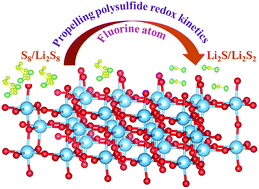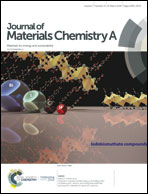Interfacial active fluorine site-induced electron transfer on TiO2 (001) facets to enhance polysulfide redox reactions for better liquid Li2S6-Based lithium–sulfur batteries†
Abstract
Due to their high efficiency and low cost, TiO2 materials are one of the promising candidates as polysulfide hosts in high-performance lithium–sulfur (Li–S) batteries. Among them, TiO2 with (001) facets have been proven to preferably mitigate “shuttle” reactions of polysulfides and improve redox reactions. However, further strategies to promote the (001) facet function are seldom reported. Herein, interfacial active fluorine sites on TiO2 (001) facets were introduced by a facile chemical tailoring strategy for promoting the performance of liquid Li2S6-based Li–S batteries. Due to the F-doping-induced interfacial electron transfer, TiO2 (001) facets not only increased the adsorption ability of polysulfides via interfacial synergistic effects of Ti, O and F sites, but also improved the efficiency of charge carriers in the crystal structure because some Ti4+ ions (d0 orbital) were reduced to Ti3+ ions (d1 orbital). As a result, liquid Li2S6-based electrodes (area: 2 cm2) supply initial capacities of 1260 and 970 mA h g−1 and retain 1030 and 500 mA h g−1 after 500 cycles at 0.8 and 3.2 mA cm−2 under 1.0 and 3.0 mg cm−2 sulfur mass loadings, respectively. This work also demonstrates the interfacial active site effect in high-performance Li–S batteries.



 Please wait while we load your content...
Please wait while we load your content...